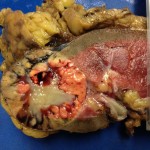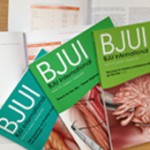Re: The Protective Role of Coenzyme Q10 in Renal Injury Associated with Extracorporeal Shock Wave Lithotripsy: a Randomized, Placebo Controlled Clinical Trial
Sir,
We read the article by Carrasco et al. [1] with interest. The study is worth attention as it relates to short-term CoQ10 use to prevent renal damage caused by SWL. However, some conflicting points and omissions occur. In addition, it would have been more ethically appropriate to conduct an animal study.
There are studies on the use and effectiveness of CoQ10 in renal diseases. Ishikawa et al., [2] Gokbel et al., [3] Sourris et al., [4] Sato et al. [5] and El-Sheikh et al. [6] state that CoQ10 effectively recovers renal functions and that it can be a treatment option for renal diseases.
Carrasco et al. [1] specifies that SWL was performed at a frequency of 60 waves/minute. Although the related mechanism of action has not been fully explained so far, completing the session at a low frequency is known to cause less damage to the kidney [7]. It could have been possible to apply treatment at various frequencies to identify the efficacy on CoQ10 based on the levels of damage.
It is understood that CoQ10 was used in daily doses of 200 mg over 2 weeks. However, in my opinion, this is a short period of time to determine the effectiveness of the treatment. The ideal blood level of CoQ10 should be more than 5.3 µg/ml [8], so it would have been more appropriate if the term of the study was between 4 to 6 weeks.
There are numerous studies showing that SWL causes oxidative stress. Yilmaz et al. [9] recently reported that SWL affects the oxidant/antioxidant balance in favour of oxidants. The findings in the study by Carrasco et al. [1] seem to be inconsistent with information showing the relationship between SWL and oxidative stress.
Erdal Yilmaz and Ercan Yuvanc
University of Kirikkale, Faculty of Medicine, Department of Urology, Kirikkale, Turkey
References
- Carrasco-Valiente J, Anglada FJ, Campos JP, Muntané J, Requena MJ, Padillo J. The Protective Role of Coenzyme Q10 in Renal Injury Associated with Extracorporeal Shock Wave Lithotripsy: a Randomized, Placebo Controlled Clinical Trial. BJU Int 2013; doi: 10.1111/bju.12485
- Ishikawa A, Kawarazaki H, Ando K, Fujita M, Fujita T, Homma Y. Renal preservation effect of ubiquinol, the reduced form of coenzyme Q10. Clin Exp Nephrol 2011; 15: 30-33
- Gokbel H, Atalay H, Okudan N, Solak Y, Belviranli M, Turk S. Coenzyme Q10 and its relation with oxidant and antioxidant system markers in patients with end-stage renal disease. Ren Fail 2011; 33: 677-681
- Sourris KC, Harcourt BE, Tang PH et al. Ubiquinone (coenzyme Q10) prevents renal mitochondrial dysfunction in an experimental model of type 2 diabetes. Free Radic Biol Med 2012; 52: 716-723
- Sato T, Ishikawa A, Homma Y. Effect of reduced form of coenzyme Q10 on cyclosporine nephrotoxicity. Exp Clin Transplant 2013; 11: 17-20
- El-Sheikh AA, Morsy MA, Mahmoud MM, Rifaai RA, Abdelrahman AM. Effect of coenzyme-q10 on Doxorubicin-induced nephrotoxicity in rats. Adv Pharmacol Sci 2012; 2012: 981461
- Yilmaz E, Batislam E, Basar M, Tuglu D, Mert C, Basar H. Optimal frequency in extracorporeal shock wave lithotripsy: prospective randomized study. Urology 2005; 66: 1160-1164
- Bhagavan HN, Chopra RK. Coenzyme Q10: absorption, tissue uptake, metabolism and pharmacokinetics. Free Radic Res 2006; 40: 445-453
- Yilmaz E, Haciislamoglu A, Kisa U, Dogan O, Yuvanc E, Batislam E. Ways in which SWL affects oxidant/antioxidant balance. Urolithiasis 2013; 41: 137-141



Sir,
We thank Dr Yilmaz and Dr Yuvanc for their interest in our article and would like to remark that in addition to a number of experimental models on the use and effectiveness of CoQ-10 in renal diseases, cited in their letter, CoQ-10 has been proven safe and with scarce secondary effects in humans suffering from cardiovascular diseases [1-4]. Hence, we do not find any ethical issues in our study.
On the other hand, it appears that low frequency ESWL causes less renal damage and pain [5,6]. Therefore most of the patients in our unit receive a frequency of 60 waves/minute by protocol. Since a frequency of 60 has been proven to be more effective than 120 [7,8], we agree that a new trial comparing the effect of CoQ-10 on patients undergoing ESWL using a frequency of 60 versus 90 might be interesting.
The used doses of CoQ-10 may vary depending on the desired effect as well as the condition to treat. Therapeutic doses have been established at about 100-300 mg/day [9], however, doses up to 1.200 mg/day have been used safely [10]. In addition, the length of treatment with CoQ-10 remains unclear. Some studies have reported positive effects after one week of treatment [11], even when CoQ-10 was administered the week before an intervention [12]. When we designed our trial there was a lack of previous studies on CoQ-10 and ESWL in humans, so we decided to use mean values of doses and treatment time (200mg/day for two weeks). Moreover, we want to highlight that our peri-ESWL CoQ-10 therapeutic scheme has demonstrated an improvement in renal injury and a decrease in renin-aldosterone axis and pro-inflammatory mediator levels. In this regard, additional studies are needed to determine whether more prolonged treatment and/or higher doses might induce further benefits.
Several studies have pointed out that ESWL causes oxidative stress. Nevertheless, there are others where this appears to be heterogeneous [13,14]. In our opinion, the article by Yilmaz et al. [15] is not comparable to our study. Firstly, determinations were performed using different specimens (plasma versus 24-h urine) and secondly, different biomarkers of oxidative stress were determined (LPO, SOD, GPx and GSH versus total oxidant status (TOS)). These might be some of the reasons why the results from the two studies differ.
Julia Carrasco
On behalf of the authors
Department of Urology, Reina Sofia University Hospital, Cordoba, Spain
References